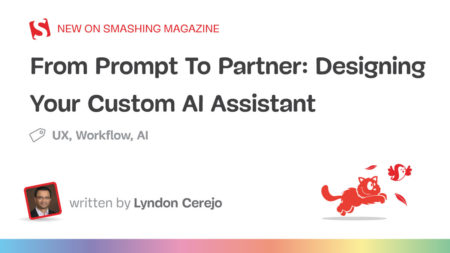Generative AI is transforming software development at an unprecedented pace. From code generation to test automation, the promise of faster delivery and reduced costs has captivated organizations. However, this rapid integration introduces new complexities. Reports increasingly show that while task-level productivity may improve, systemic performance often suffers.
This article synthesizes perspectives from cognitive science, software engineering, and organizational governance to examine how AI tools impact both the quality of software delivery and the evolution of human expertise. We argue that the long-term value of AI depends on more than automation—it requires responsible integration, cognitive skill preservation, and systemic thinking to avoid the paradox where short-term gains lead to long-term decline.
The Productivity Paradox of AI
AI tools are reshaping software development with astonishing speed. Their ability to automate repetitive tasks—code scaffolding, test case generation, and documentation—promises frictionless efficiency and cost savings. Yet, the surface-level allure masks deeper structural challenges.
Recent data from the 2024 DORA report revealed that a 25% increase in AI adoption correlated with a 1.5% drop in delivery throughput and a 7.2% decrease in delivery stability. These findings counter popular assumptions that AI uniformly accelerates productivity. Instead, they suggest that localized improvements may shift problems downstream, create new bottlenecks, or increase rework.
This contradiction highlights a central concern: organizations are optimizing for speed at the task level without ensuring alignment with overall delivery health. This paper explores this paradox by examining AI’s impact on workflow efficiency, developer cognition, software governance, and skill evolution.
Local Wins, Systemic Losses
The current wave of AI adoption in software engineering emphasizes micro-efficiencies—automated code completion, documentation generation, and synthetic test creation. These features are especially attractive to junior developers, who experience rapid feedback and reduced dependency on senior colleagues. However, these localized gains often introduce invisible technical debt.
Generated outputs frequently exhibit syntactic correctness without semantic rigor. Junior users, lacking the experience to evaluate subtle flaws, may propagate brittle patterns or incomplete logic. These flaws eventually reach senior engineers, escalating their cognitive load during code reviews and architecture checks. Rather than streamlining delivery, AI may redistribute bottlenecks toward critical review phases.
In testing, this illusion of acceleration is particularly common. Organizations frequently assume that AI can replace human testers by automatically generating artifacts. However, unless test creation is identified as a process bottleneck—through empirical assessment—this substitution may offer little benefit. In some cases, it may even worsen outcomes by masking underlying quality issues beneath layers of machine-generated test cases.
The core issue is a mismatch between local optimization and system performance. Isolated gains often fail to translate into team throughput or product stability. Instead, they create the illusion of progress while intensifying coordination and validation costs downstream.
Cognitive Shifts: From First Principles to Prompt Logic
AI is not merely a tool; it represents a cognitive transformation in how engineers interact with problems. Traditional development involves bottom-up reasoning—writing and debugging code line by line. With generative AI, engineers now engage in top-down orchestration, expressing intent through prompts and validating opaque outputs.
This new mode introduces three major challenges:
- Prompt Ambiguity: Small misinterpretations in intent can produce incorrect or even dangerous behavior.
- Non-Determinism: Repeating the same prompt often yields varied outputs, complicating validation and reproducibility.
- Opaque Reasoning: Engineers cannot always trace why an AI tool produced a specific result, making trust harder to establish.
Junior developers, in particular, are thrust into a new evaluative role without the depth of understanding to reverse-engineer outputs they didn’t author. Senior engineers, while more capable of validation, often find it more efficient to bypass AI altogether and write secure, deterministic code from scratch.
However, this is not a death knell for engineering thinking—it is a relocation of cognitive effort. AI shifts the developer’s task from implementation to critical specification, orchestration, and post-hoc validation. This change demands new meta-skills, including:
- Prompt design and refinement,
- Recognition of narrative bias in outputs,
- System-level awareness of dependencies.
Moreover, the siloed expertise of individual engineering roles is beginning to evolve. Developers are increasingly required to operate across design, testing, and deployment, necessitating holistic system fluency. In this way, AI may be accelerating the convergence of narrowly defined roles into more integrated, multidisciplinary ones.
Governance, Traceability, and the Risk Vacuum
As AI becomes a common component in the SDLC, it introduces substantial risk to governance, accountability, and traceability. If a model-generated function introduces a security flaw, who bears responsibility? The developer who prompted it? The vendor of the model? The organization that deployed it without audit?
Currently, most teams lack clarity. AI-generated content often enters codebases without tagging or version tracking, making it nearly impossible to differentiate between human-written and machine-generated components. This ambiguity hampers maintenance, security audits, legal compliance, and intellectual property protection.
Further compounding the risk, engineers often copy proprietary logic into third-party AI tools with unclear data usage policies. In doing so, they may unintentionally leak sensitive business logic, architecture patterns, or customer-specific algorithms.
Industry frameworks are beginning to address these gaps. Standards such as ISO/IEC 22989 and ISO/IEC 42001, along with NIST’s AI Risk Management Framework, advocate for formal roles like AI Evaluator, AI Auditor, and Human-in-the-Loop Operator. These roles are crucial to:
- Establish traceability of AI-generated code and data,
- Validate system behavior and output quality,
- Ensure policy and regulatory compliance.
Until such governance becomes standard practice, AI will remain not just a source of innovation—but a source of unmanaged systemic risk.
Vibe Coding and the Illusion of Playful Productivity
An emerging practice in the AI-assisted development community is “vibe coding”—a term describing the playful, exploratory use of AI tools in software creation. This mode lowers the barrier to experimentation, enabling developers to iterate freely and rapidly. It often evokes a sense of creative flow and novelty.
Yet, vibe coding can be dangerously seductive. Because AI-generated code is syntactically correct and presented with polished language, it creates an illusion of completeness and correctness. This phenomenon is closely related to narrative coherence bias—the human tendency to accept well-structured outputs as valid, regardless of accuracy.
In such cases, developers may ship code or artifacts that “look right” but haven’t been adequately vetted. The informal tone of vibe coding masks its technical liabilities, particularly when outputs bypass review or lack explainability.
The solution is not to discourage experimentation, but to balance creativity with critical evaluation. Developers must be trained to recognize patterns in AI behavior, question plausibility, and establish internal quality gates—even in exploratory contexts.
Toward Sustainable AI Integration in SDLC
The long-term success of AI in software development will not be measured by how quickly it can generate artifacts, but by how thoughtfully it can be integrated into organizational workflows. Sustainable adoption requires a holistic framework, including:
- Bottleneck Assessment: Before automating, organizations must evaluate where true delays or inefficiencies exist through empirical process analysis.
- Operator Qualification: AI users must understand the technology’s limitations, recognize bias, and possess skills in output validation and prompt engineering.
- Governance Embedding: All AI-generated outputs should be tagged, reviewed, and documented to ensure traceability and compliance.
- Meta-Skill Development: Developers must be trained not just to use AI, but to work with it—collaboratively, skeptically, and responsibly.
These practices shift the AI conversation from hype to architecture—from tool fascination to strategic alignment. The most successful organizations will not be those that simply deploy AI first, but those that deploy it best.
Architecting the Future, Thoughtfully
AI will not replace human intelligence—unless we allow it to. If organizations neglect the cognitive, systemic, and governance dimensions of AI integration, they risk trading resilience for short-term velocity.
But the future need not be a zero-sum game. When adopted thoughtfully, AI can elevate software engineering from manual labor to cognitive design—enabling engineers to think more abstractly, validate more rigorously, and innovate more confidently.
The path forward lies in conscious adaptation, not blind acceleration. As the field matures, competitive advantage will go not to those who adopt AI fastest, but to those who understand its limits, orchestrate its use, and design systems around its strengths and weaknesses.
The post The AI productivity paradox in software engineering: Balancing efficiency and human skill retention appeared first on SD Times.
Source: Read MoreÂ

